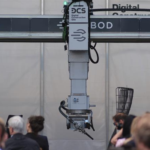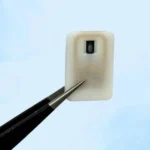Researchers from the University of Cambridge have unveiled a novel 3D printing technique for metals, addressing the longstanding cost and post-production challenges. This method integrates the advantages of intricate 3D printed shapes and the engineering capabilities of traditional metal manufacturing.

The essence of this innovation lies in controlling the internal structure of metals during 3D printing, eliminating the ancient ‘heating and beating’ approach. Dr. Matteo Seita, who spearheaded this research, underscores the importance of structural control in metals to maximize 3D printing’s eco-friendly potential.
Historically, metals have been crafted through heating and subsequent shaping, a method that’s endured due to its ability to modulate the metal’s internal structure. However, the limitation of contemporary 3D printing is its inability to replicate this structural control, necessitating extensive post-production modifications. Collaborating with international researchers, Seita introduced a unique formula for 3D printed metals, harnessing laser control to dictate the properties of the end product.
“We think this method could help reduce the costs of metal 3D printing, which could in turn improve the sustainability of the metal manufacturing industry,” said Seita.
“In the near future, we also hope to be able to bypass the low temperature treatment in the furnace, further reducing the number of steps required before using 3D printed parts in engineering applications.”
This approach ensures metals are not only robust but also less brittle. By utilizing the laser as a microscopic tool, the team achieved a balance of strength and flexibility in 3D printed steel, comparable to traditionally produced steel.
Source: https://www.cam.ac.uk/
Come and let us know your thoughts on our Facebook, Twitter, and LinkedIn pages, and don’t forget to sign up for our weekly additive manufacturing newsletter to get all the latest stories delivered right to your inbox.










